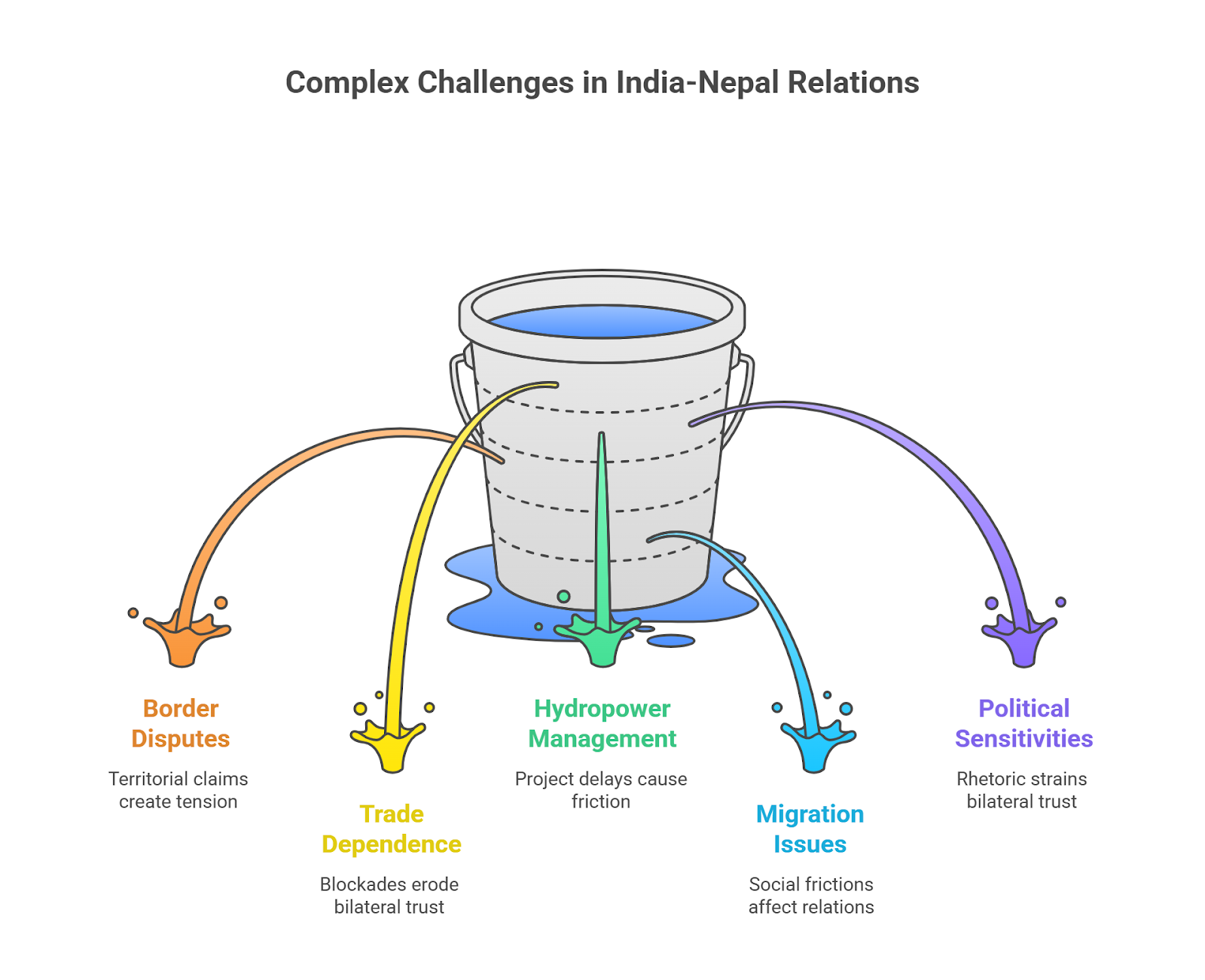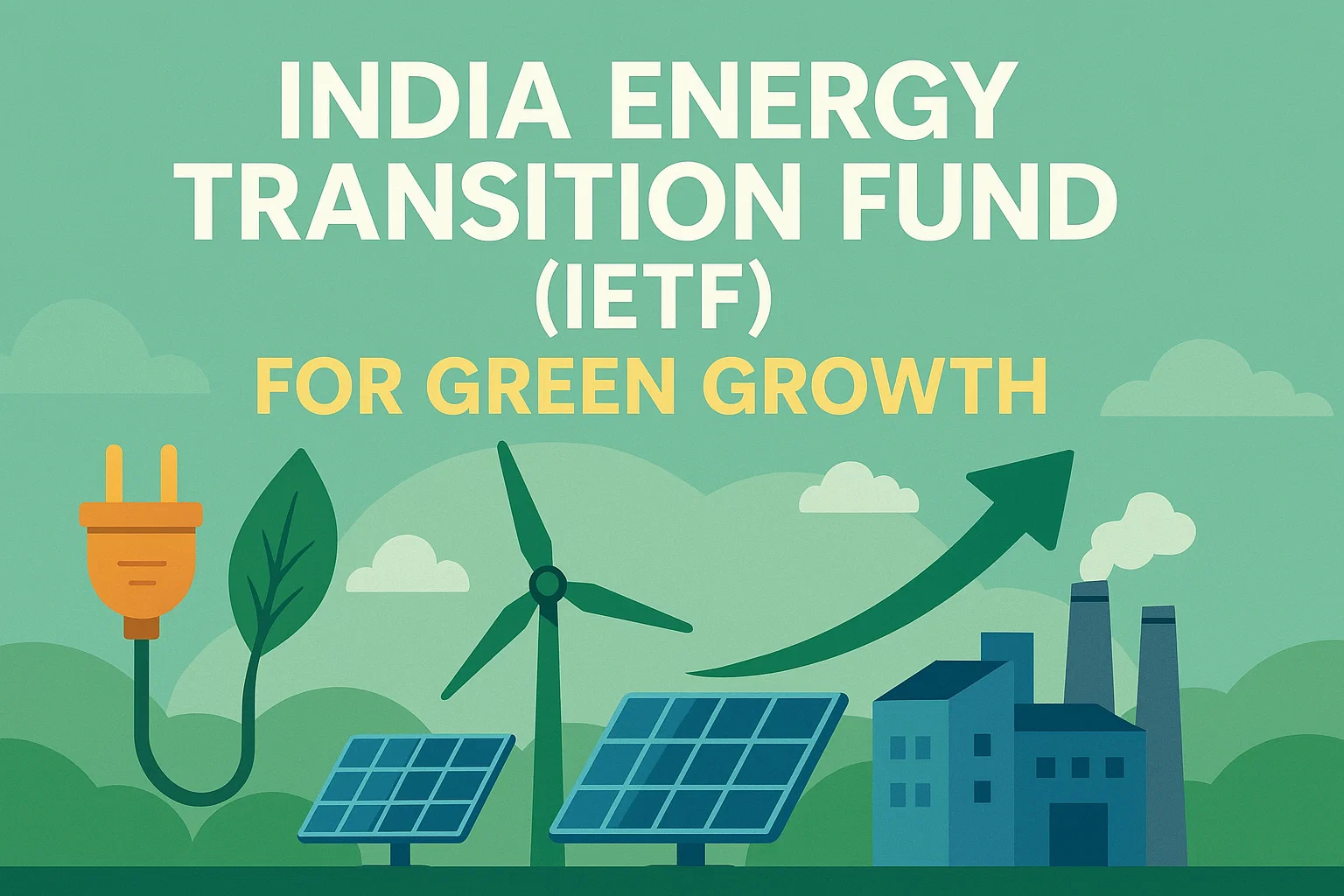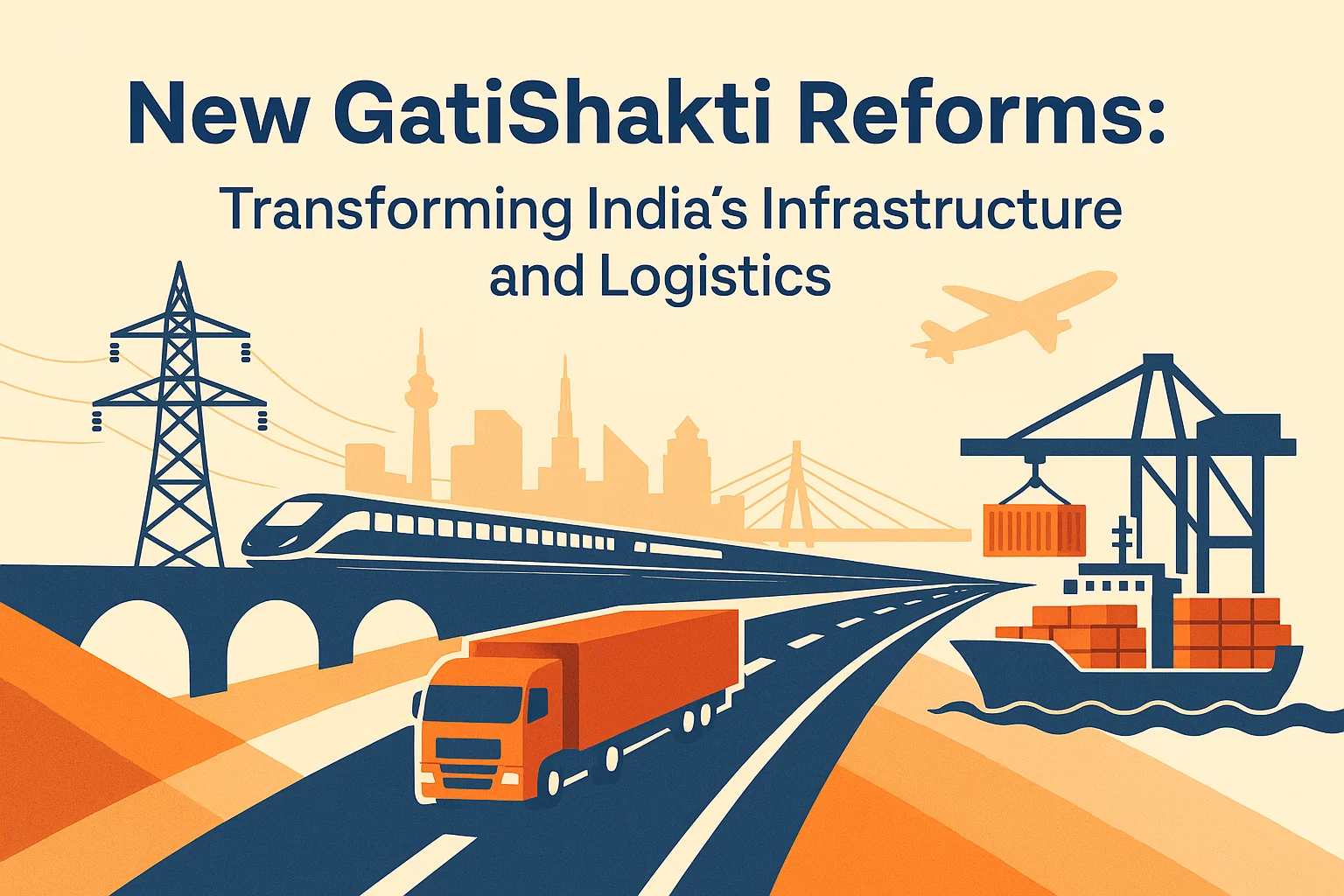Font size:
Print
India-Nepal Relations: Challenges of China’s Growing Footprint
India-Nepal Relations: Confronting the Powerful Challenge of China’s Expanding Influence
Context: Nepal is increasingly balancing its economic ties as China’s expanding trade, investment, and tourism footprint deepens its influence. This compels Kathmandu to pursue sustainability in its engagement with Beijing while pushing India to compete more strategically to retain its commercial presence.

Why is China a concern for India in its bilateral relations with Nepal?
China’s expanding economic and strategic presence in Nepal is a growing concern for India, traditionally Kathmandu’s closest partner.
-
- Trade and Economic Asymmetry: China’s exports to Nepal touched Rs 298.77 billion in 2023-24, creating a trade deficit of over Rs 338 billion (ORCA, 2025). The widening gap risks marginalising India’s trade position.
- Electric Vehicles & Market Capture: Chinese EVs account for over 70% of Nepal’s new passenger vehicles, reducing dependence on Indian petroleum imports and eroding India’s market share.
- Tourism and Connectivity: Chinese tourists crossed 100,000 arrivals in 2024, aided by Beijing’s “Visit Nepal Year in China (2025).” This strengthens Chinese cultural influence in Kathmandu.
- Strategic Access: Infrastructure like the Rasuwagadhi-Kerung border route enhances China’s logistical presence. Natural disasters (e.g., July 2025 GLOF flood) expose Nepal’s reliance on Beijing for transboundary infrastructure recovery.
- Diplomatic Leverage: Nepal’s pursuit of multi-alignment risks tilting towards China if India’s engagement appears inconsistent.
India fears that such economic, infrastructural, and cultural inroads may enable China to extend its geostrategic influence south of the Himalayas, encircling India.
What measures have been taken to address them by India?
- Connectivity and Infrastructure: India has invested in cross-border rail links (Jayanagar-Kurtha), road corridors, and integrated check posts to deepen trade and people-to-people exchanges (Ministry of External Affairs).
- Energy Cooperation: The India-Nepal Power Trade Agreement (2014) allows Nepal to export surplus hydropower to India. In 2023-24, Nepal exported over 1,200 MW to India (Economic Survey 2024).
- Development Assistance: India remains Nepal’s largest development partner, funding health, education, irrigation, and post-earthquake reconstruction projects through grant and soft credit lines.
- Diplomatic Engagement: Regular high-level visits, such as PM Deuba’s 2022 India visit and PM Modi’s 2022 Lumbini visit, reflect efforts to stabilise political ties.
- People-to-People Links: The 1950 Treaty of Peace and Friendship continues to ensure free movement and residence, underlining the unique socio-cultural fabric.


